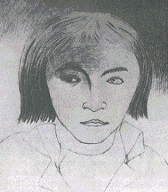 W
WLouis-Michel Aury was a French privateer operating in the Gulf of Mexico and the Caribbean during the early 19th century.
 W
WThe Battle of Ty-ho Bay was a significant naval engagement in 1855 involving the United Kingdom and United States against Chinese pirates. The action off Tai O, Hong Kong was to rescue captured merchant vessels, held by a fleet of armed war-junks. British and American forces defeated the pirates in one of the last major battles between Chinese pirate fleets and western navies. It was also one of the first joint operations undertaken by British and American forces.
 W
WRenato Beluche was an American-born Venezuelan merchant, pirate and privateer active in the early-nineteenth century Gulf Coast. Born in New Orleans, Spanish Louisiana to a French smuggler, Renate went to sea as a pilot's mate in 1802 onboard a Spanish Navy warship. By 1805, he had left the navy and become the master of a schooner. Using this ship, Renato turned to piracy and raided Spanish and British merchantmen operating in the gulf.
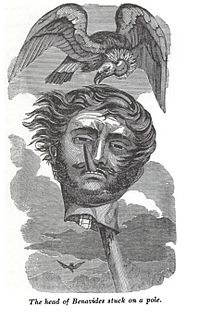 W
WVicente Benavides Llanos was a Chilean soldier who fought in the Chilean War of Independence.
 W
WJohn 'Black Jack' Anderson was an African-American sealer and pirate active in the Recherche Archipelago off the south coast of Western Australia. He is Australia's only recorded male pirate.
 W
WHippolyte Bouchard, or Hipólito Bouchard, was a French-born Argentine sailor and corsair who fought for Argentina, Chile, and Peru.
 W
WÁngel García, nicknamed Cabeza de Perro was a Spanish pirate. His nickname, "Cabeza de Perro" translates to English as Dog Head.
 W
WCave-In-Rock is a village in Hardin County, Illinois, United States. Its principal feature and tourist attraction is nearby Cave-In-Rock, on the banks of the Ohio River. In 1816, the earliest known permanent white settlers arrived and started building a town near the cave. The town was originally known as Rock and Cave, Illinois, with a post office under this name. On October 24, 1849, the town was officially renamed Cave-In-Rock. Cave-In-Rock was incorporated as a village in 1901. The population was 318 at the 2010 census.
 W
WCheung Po Tsai was a navy colonel of the Qing Dynasty and former pirate. "Cheung Po Tsai" literally means "Cheung Po the Kid". He was known to the Portuguese Navy as Quan Apon Chay during the Battle of the Tiger's Mouth.
 W
WChing Shih (born Shih Yang, a.k.a. Cheng I Sao, was a Chinese pirate leader who terrorized the China Seas during the Jiaqing Emperor period of the Qing dynasty in the early 19th century. She commanded over 1800 junks manned by 60,000 to 80,000 pirates – men, women, and even children. She entered into conflict with major nations, such as the British Empire, the Portuguese Empire, and the Qing dynasty.
 W
WChui A-poo was a 19th-century Qing Chinese pirate who commanded a fleet of more than 50 junks in the South China Sea. He was one of the two most notorious South China Sea pirates of the era, along with Shap Ng-tsai.
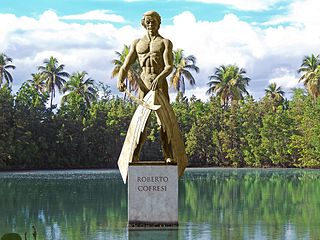 W
WRoberto Cofresí y Ramírez de Arellano, better known as El Pirata Cofresí, was a pirate from Puerto Rico. He was born into a noble family, but the political and economic difficulties faced by the island as a colony of the Spanish Empire during the Latin American wars of independence meant that his household was poor. Cofresí worked at sea from an early age which familiarized him with the region's geography, but it provided only a modest salary, and he eventually decided to abandon the sailor's life and became a pirate. He had previous links to land-based criminal activities, but the reason for Cofresí's change of vocation is unknown; historians speculate that he may have worked as a privateer aboard El Scipión, a ship owned by one of his cousins.
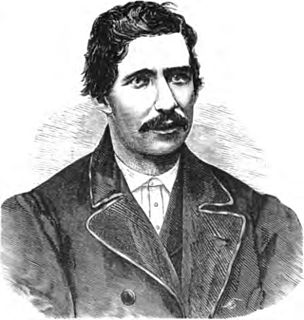 W
WPatrick Conway, commonly known by his alias Patsy or Patsy Conroy, was an American burglar and river pirate. He was the founder and leader of the Patsy Conroy Gang, a gang of river pirates active on the New York waterfront in the old Fourth Ward and Corlears' Hook districts during the post-American Civil War era.
 W
WJames Ford, born James N. Ford, also known as James N. Ford, Sr., the "N" possibly for Neal, was an American civic leader and business owner in western Kentucky and southern Illinois, from the late 1790s to mid-1830s. Despite his clean public image as a "Pillar of the Community", Ford was secretly a river pirate and the leader of a gang that was later known as the "Ford's Ferry Gang". His men were the river equivalent of highway robbers. They hijacked flatboats and Ford's "own river ferry" for tradable goods from local farms that were coming down the Ohio River.
 W
WHMS Forward was a British Albacore-class wooden screw gunboat launched in 1855 and sold in 1869. After her sale, Mexican pirates captured her, and boats from the United States Navy sloop-of-war USS Mohican destroyed her in the Battle of Boca Teacapan in 1870.
 W
WHezekiah Frith, Sr. (1763–1848) was an 18th-century British ship owner with the reputation of a "gentleman privateer", who engaged in piracy during the 1790s. One of the richest men in Bermuda during the late 18th and early 19th centuries, he built the Spithead House in Warwick, Bermuda.
 W
WJosé Gaspar, also known by his nickname Gasparilla, is an apocryphal Spanish pirate, the "Last of the Buccaneers," who is claimed to have roamed and plundered across the Gulf of Mexico and the Spanish Main from his base in southwest Florida. Details about his early life, motivations, and piratical exploits differ in different tellings. However, the various versions agree that he was a remarkably active pirate during Florida's second Spanish period, that he amassed a huge fortune by taking many prizes and ransoming many hostages, and that he died by leaping from his ship rather than face capture by the U.S. Navy, leaving behind an enormous and as-yet undiscovered treasure.
 W
WCharles Gibbs was the pseudonym of an American pirate, born James D. Jeffers. Jeffers was one of the last active pirates in the Caribbean during the early 19th century, and was among the last persons to be executed for piracy by the United States.
 W
WPedro Gilbert or Don Pedro Gibert was an early 19th-century pirate, who was one of the few remaining pirates continuing to raid shipping on the Atlantic coast.
 W
WThe Golden Age of Piracy is a common designation for the period between the 1650s and the 1730s, when maritime piracy was a significant factor in the histories of the Caribbean, the United Kingdom, Indian Ocean states, North America, and West Africa.
 W
WRais Hamidou or Hamidu, also called Hammida or Amidon (1773–1815) was a famous Algerian corsair. He captured many ships during his career. Hamidou died in the Battle off Cape Gata against an American squadron commanded by Stephen Decatur in 1815. The commune of Raïs Hamidou in Algiers, is named after him.
 W
WWilliam Henry "Bully" Hayes was a notorious American-born ship's captain who engaged in blackbirding in the 1860s and 1870s.
 W
WAlbert W. Hicks, also known as Elias W. Hicks, William Johnson, John Hicks, and Pirate Hicks, was a triple murderer, and one of the last persons executed for piracy in the United States. Cultural historian Rich Cohen places him as the first New York City legendary gangster figure, a bridge between the piracy of old and rise of a new 'gangster nation'.
 W
WCaptain Richard Avery Hornsby ( -1819) is an almost forgotten Sunderland military figure from the 18th century. He became famous after taking on a boat full of French pirates almost single-handedly - and winning.
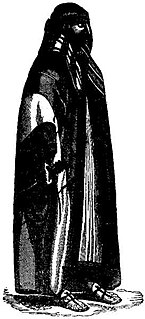 W
WRahmah ibn Jabir ibn Adhbi Al Jalhami was an Arab ruler in the Persian Gulf region and was described by his contemporary, the English traveler and author, James Silk Buckingham, as ‘the most successful and the most generally tolerated pirate, perhaps, that ever infested any sea.’
 W
WBill Johnston was a Canadian-American smuggler, river pirate, and War of 1812 privateer. Born in Canada, Johnston was accused of spying in 1812 and he joined the American side of the war and lived the rest of his life in the United States.
 W
WEdward Jordan (1771–1809) was an Irish rebel, fisherman and pirate in Nova Scotia. He was typical of the violent but short-lived pirates in the 19th century following the end of "Golden Age of Piracy" in the 18th century. Born in County Carlow, Ireland, he took part in the Irish rebellions of 1797-98 but was pardoned and attempted to start a new life as a fisherman in Nova Scotia. On 13 September 1809, desperate to avoid debts, he slaughtered the crew of a merchant who came to seize the schooner he owned named Three Sisters. However the captain, John Stairs, managed to escape overboard to be rescued by a passing fishing schooner and survived to spread the alarm. A few weeks later the Royal Navy schooner HMS Cuttle captured Jordan.
 W
WJørgen Jørgensen was a Danish adventurer during the Age of Revolution. During the Action of 2 March 1808 his ship was captured by the British. In 1809 he sailed to Iceland, declared the country independent from Denmark and pronounced himself its ruler. He intended to found a new republic following the United States and the French First Republic. He was also a prolific writer of letters, papers, pamphlets and newspaper articles covering a wide variety of subjects, and for a period was an associate of the famous botanists Joseph Banks and William Jackson Hooker. He left over a hundred written autographs and drawings, most of which are collected in the British Library. Marcus Clarke referred to Jørgensen as "a singularly accomplished fortune wooer—one of the most interesting human comets recorded in history".
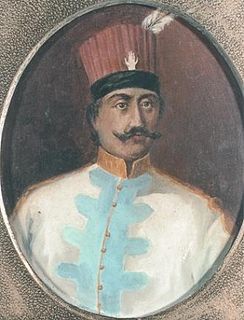 W
WLambros Katsonis was a Greek revolutionary hero of the 18th century; he was also a knight of the Russian Empire and an officer with the rank of colonel in the Imperial Russian Army, decorated with an Order of St. George, IV class medal.
 W
WJean Lafitte was a French pirate and privateer who operated in the Gulf of Mexico in the early 19th century. He and his older brother Pierre spelled their last name Laffite, but English language documents of the time used "Lafitte". This has become the common spelling in the United States, including places named after him.
 W
WSamuel Hall Lord, also known as Sam Lord, was one of the most famous buccaneers on the island of Barbados. Lord amassed great wealth for his castle-mansion in Barbados. He did this through the direct plundering of ships stranded in the coral reefs just off the coast of his estate. According to legend, Sam Lord would hang lanterns high in the coconut trees around his estate. Passing ships far out at sea would think it was the port city of Bridgetown and would sail towards the reef in the area, leading them to wreck their ships. Sam Lord would then board the ships and keep the riches for his castle, which stood in the parish of Saint Philip.
 W
WSamuel Ross Mason, also spelled Meason, was a Virginia militia captain, on the American western frontier, during the American Revolutionary War. After the war, he became the leader of the Mason Gang, a criminal gang of river pirates and highwaymen on the lower Ohio River and the Mississippi River in the late 18th and early 19th centuries. He was associated with outlaws around Red Banks, Cave-in-Rock, Stack Island, and the Natchez Trace.
 W
WColonel Plug, also known as Colonel Fluger and "The Last of the Boat-Wreckers", who existed sometime between the 1790s and 1820, was the legendary river pirate who ran a criminal gang on the Ohio River in a cypress swamp near the mouth of the Cache River. The outlaw camp of Colonel Plug was supposedly below the river pirate hideout of Cave-In-Rock and the U.S. Army post at Fort Massac, which monitored and policed frontier river traffic just above the confluence of the Ohio and Mississippi Rivers.
 W
WA river pirate is a pirate who operates along a river. The term has been used to describe many different kinds of pirate groups who carry out riverine attacks in Asia, Africa, Europe, North America, and South America. They are usually prosecuted under national, not international law.
 W
WShap-ng-tsai was a Chinese pirate active in the South China Sea from about 1845 to 1859. He was one of the two most notorious South China Sea pirates of the era, along with Chui A-poo. He commanded about 70 junks stationed at Dianbai, about 180 miles west of Hong Kong. Coastal villages and traders paid Shap-ng-tsai protection money so they would not be attacked. Chinese naval ships that pursued the pirate were captured and their officers taken captive and held for ransom. The Chinese government offered him a pardon and the rank of officer in the military but he did not accept.
 W
WJacque Alexander Tardy better known as "Tardy the Pirate", was an unsuccessful and atypical pirate who usually poisoned his victims. Most known for his last act of piracy of the brig Crawford. He wore a blue velvet frock coat, carried a cane and was small of stature with fine features and a dark complexion. At the time of his death he had grey hair and wore dentures.
 W
WIoannis Varvakis, also known as Ivan Andreevich Varvatsi, was a Greek distinguished member of the Russian and Greek communities, national hero, member of the Filiki Eteria and benefactor of the places where he lived.
 W
WDominique You or Youx was a privateer, soldier, and politician.